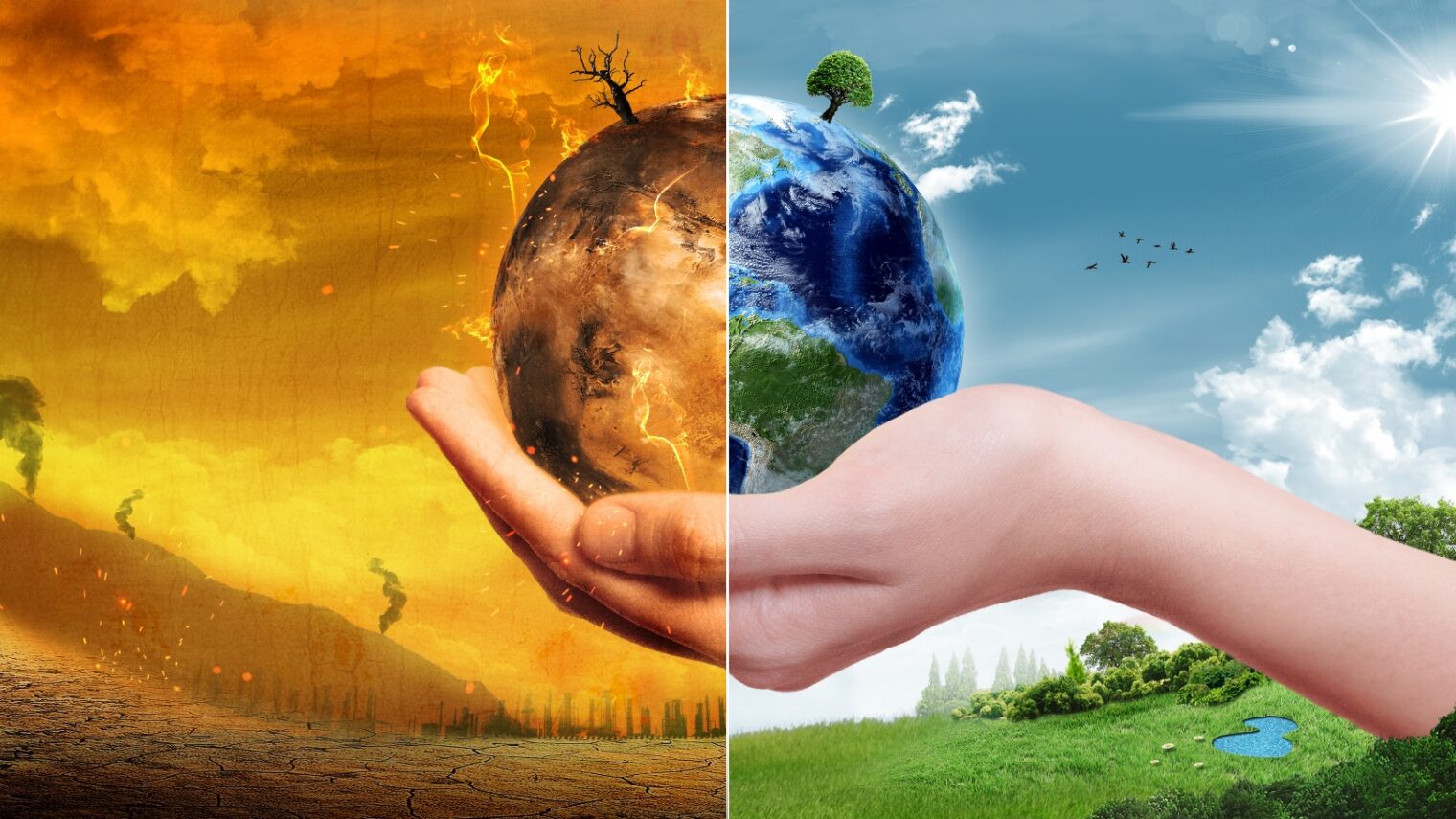Global Warming & Understanding the Causes, Effects, and Solutions

Global warming is one of the most pressing environmental issues of our time. It refers to the long-term rise in the average temperature of the Earth’s climate system, primarily due to human activities. This phenomenon has far-reaching impacts on the planet’s ecosystems, weather patterns, sea levels, and human societies. Understanding the causes, effects, and potential solutions to global warming is crucial for mitigating its impacts and safeguarding the future of our planet.
Causes of Global Warming
The primary cause of global warming is the increase in greenhouse gases (GHGs) in the atmosphere. These gases trap heat from the sun, creating a “greenhouse effect” that warms the Earth. The main contributors to this increase are:
Burning of Fossil Fuels
Carbon Dioxide (CO2) Emissions: The combustion of fossil fuels such as coal, oil, and natural gas for energy and transportation releases significant amounts of CO2 into the atmosphere. This is the largest source of anthropogenic (human-caused) GHG emissions.
Industrial Processes: Manufacturing and industrial activities also contribute to CO2 emissions through the use of fossil fuels and chemical reactions in production processes.
Deforestation
Loss of Carbon Sinks: Forests act as carbon sinks, absorbing CO2 from the atmosphere. Deforestation for agriculture, logging, and urban development reduces the number of trees available to absorb CO2, increasing atmospheric concentrations.
Agriculture
Methane (CH4) Emissions: Agricultural activities, particularly livestock farming, produce methane, a potent GHG. Methane is released during digestion in ruminant animals and from manure management.
Nitrous Oxide (N2O) Emissions: The use of synthetic fertilizers and organic manures in agriculture releases nitrous oxide, another powerful GHG.
Waste Management
Landfills: Decomposing organic waste in landfills generates methane emissions.
Wastewater Treatment: The treatment and discharge of wastewater can produce methane and nitrous oxide emissions.
Industrial Emissions
Fluorinated Gases: Industrial processes release fluorinated gases, which have a high global warming potential (GWP) despite being present in smaller quantities.
Effects of Global Warming
Global warming has numerous and varied impacts on the environment, weather patterns, and human societies. Some of the most significant effects include:
Rising Temperatures
Heatwaves: Increased global temperatures lead to more frequent and severe heatwaves, posing health risks and impacting ecosystems.
Changing Weather Patterns: Global warming affects atmospheric circulation, leading to shifts in weather patterns and altering precipitation distribution.
Melting Ice and Rising Sea Levels
Glacial and Ice Cap Melting: Warming temperatures cause glaciers and polar ice caps to melt, contributing to rising sea levels.
Thermal Expansion: As ocean temperatures rise, seawater expands, further contributing to sea level rise.
Ocean Acidification
Impact on Marine Life: Increased CO2 levels lead to higher concentrations of carbonic acid in the oceans, resulting in ocean acidification. This process harms marine organisms, particularly those with calcium carbonate shells or skeletons, such as corals and shellfish.
Extreme Weather Events
Storms and Floods: Global warming increases the intensity and frequency of extreme weather events, including hurricanes, typhoons, and heavy rainfall, leading to more severe flooding.
Droughts and Wildfires: Higher temperatures and changing precipitation patterns contribute to prolonged droughts and an increased risk of wildfires.
Impact on Ecosystems
Habitat Loss: Rising temperatures and changing weather patterns disrupt habitats, affecting biodiversity and leading to species migration and extinction.
Ecosystem Imbalance: Changes in temperature and precipitation can alter the balance of ecosystems, affecting food webs and ecosystem services.
Human Health and Societies
Health Risks: Increased heatwaves, air pollution, and the spread of vector-borne diseases pose significant health risks.
Economic Impact: Global warming affects agriculture, fisheries, tourism, and infrastructure, leading to economic losses and increased costs for adaptation and mitigation.
Solutions to Global Warming
Addressing global warming requires a comprehensive and multi-faceted approach involving individuals, communities, governments, and international organizations. Key solutions include:
Reducing Greenhouse Gas Emissions
Transition to Renewable Energy: Shifting from fossil fuels to renewable energy sources such as solar, wind, and hydroelectric power can significantly reduce CO2 emissions.
Energy Efficiency: Improving energy efficiency in buildings, transportation, and industry can lower energy consumption and emissions.
Protecting and Restoring Forests
Reforestation and Afforestation: Planting trees and restoring degraded forests can enhance carbon sequestration and help offset emissions.
Sustainable Land Use: Implementing sustainable land use practices in agriculture and forestry can reduce deforestation and promote ecosystem health.
Promoting Sustainable Agriculture
Climate-Smart Agriculture: Adopting climate-smart agricultural practices, such as crop diversification, improved soil management, and efficient water use, can reduce GHG emissions and enhance resilience.
Reducing Methane Emissions: Implementing better livestock management practices and optimizing manure management can lower methane emissions from agriculture.
Improving Waste Management
Recycling and Composting: Enhancing recycling programs and promoting composting can reduce the amount of organic waste sent to landfills, thereby lowering methane emissions.
Waste-to-Energy: Converting waste into energy through technologies like anaerobic digestion can provide renewable energy and reduce landfill emissions.
Advancing Carbon Capture and Storage (CCS)
Technological Solutions: Developing and deploying CCS technologies can capture CO2 emissions from industrial sources and power plants, storing them underground to prevent release into the atmosphere.
Enhancing Climate Policy and International Cooperation
Global Agreements: International agreements, such as the Paris Agreement, aim to unite countries in the effort to limit global warming and reduce emissions.
National and Local Policies: Governments can implement policies to promote renewable energy, enhance energy efficiency, and support sustainable practices in various sectors.
Raising Awareness and Education
Public Awareness Campaigns: Educating the public about the causes and effects of global warming can foster a sense of responsibility and encourage behavioral changes.
Climate Education: Integrating climate change education into school curricula can equip future generations with the knowledge and skills to address environmental challenges.
Conclusion
Global warming is a complex and urgent issue that demands immediate and sustained action. By understanding its causes and effects, and by implementing comprehensive solutions, we can mitigate its impacts and build a more sustainable and resilient future. Collaborative efforts at the individual, community, national, and international levels are essential to address this global challenge and safeguard the planet for future generations.


